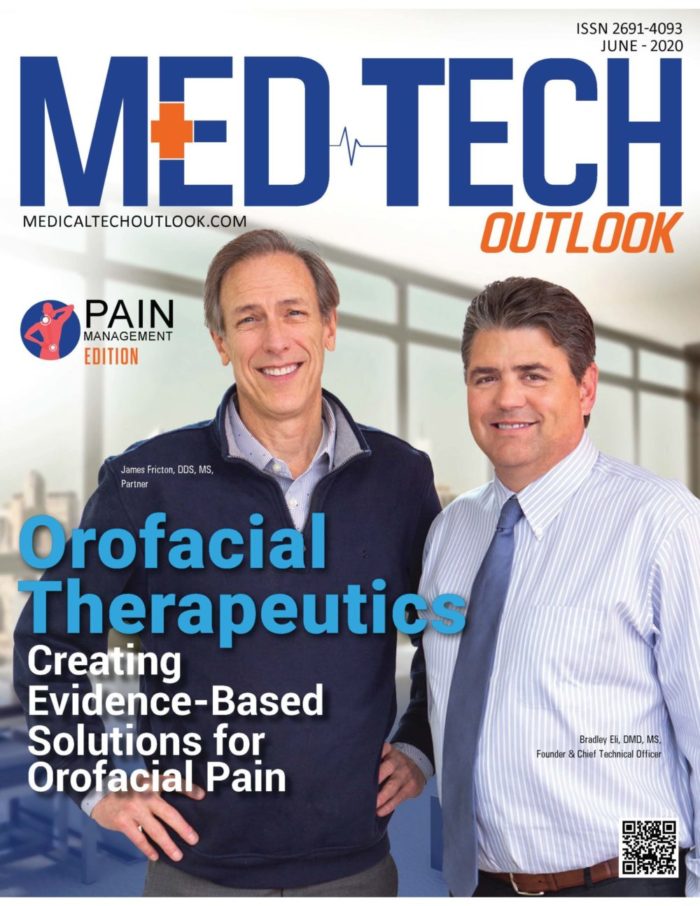No One Encounters Trauma in a Vacuum
Many people will seek the aid of a medical or rehabilitation professional (e.g. physiotherapist, chiropractor, physician, dentist) for assistance in recovering from musculoskeletal trauma. Commonly patient histories will include car crashes, workplace injuries, sports injuries, or slips and falls, the most common outcomes from which are pain and mobility impairments. Physiotherapists and other orthodox medically trained providers should be perfectly situated to help their patients find and resume a satisfactory life trajectory after such events.
Less commonly disclosed as histories in those presenting with signs of trauma, but equally (or perhaps more) common, include bullying, domestic abuse, sexual assault, or experiences of chronic cumulative stress in the home, school, or workplace.
While physiotherapists, chiropractors, dentists, physicians, and others are well-trained and positioned to make good clinical decisions regarding evidence-based care decisions based on presenting signs and symptoms arising from common trauma histories, we pose a bigger question: Are clinicians adequately prepared to accompany patients on their journeys towards satisfactory “hoped for” life trajectories following those that are often more stigmatized, marginalized, and therefore less frequently disclosed?
How should the victim of persistent interpersonal violence be expected to respond to evidence-based-care if/when she/he gets into a car crash?
There now exists overwhelming evidence that the best predictors of reports of pain and disability after MSK injuries are NOT the parameters of the event itself. Not the speed or direction of the colliding vehicle or whether the target was aware of the impending collision. The most consistent predictors are those things better conceptualized as psychological phenomena (beliefs and values, mood, distress, expectations) and sociocultural or socioenvironmental (contextual) factors. The contextual piece represents a massive number of possible variables, interactions, mediators, and effect modifiers that we’ve only just begun to explore. So massive in fact that it is difficult to see how traditional empirical means of research will ever really capture adequately. We appreciate that that statement alone is likely to cause fits for some researchers.
And while we’re on the topic, can we respectfully ask people to stop using the word ‘psychosocial’ as a catch-all phrase referring to everything that cannot be easily quantified within the body? Lumping those two huge domains (the psychological and the social) together as a single term does justice to neither, and makes them easier to dismiss by the broader clinical field. Thank you. Let us step carefully off this soapbox now.
The concept of intersectional trauma, violence, and oppression is becoming increasingly relevant. Actually, we take that back. It has always been relevant and it is becoming increasingly recognized and discussed. And, for good reason. Whether through the overt oppression of certain groups based on their race or ethnocultural background, religion, sex, sex or gender-based identity and orientation, class, ability, or appearance, almost everyone has experienced some form of trauma from this perspective, some much more than others of course. We further believe that through the COVID-19 pandemic, we (collectively) are ALL living through an experience of trauma, inasmuch as the experiences of isolation, fear of infection, and adversarial encounters with others have forced us from our desired life structures in a way that leaves many feeling powerless, helpless, and unable to experience the full range of human emotions. This is, by definition, trauma.
These perspectives are similar to those raised by the United Nations.
Why is this relevant for those who practice in areas related to musculoskeletal trauma? Consider this: if the International Association for the Study of Pain has recently seen it necessary to explicitly declare that people learn the concept of pain through their life experiences, does it not stand to reason that people learn the concept, experience, and reaction to trauma also through their life experiences? Does it not further stand to reason then, that the ways in which we’ve experienced, coped with, and resolved (or not) prior traumas, will affect how we experience, cope with, and interpret new traumas?
We have been exploring exactly that question in our research labs, using two variables: a self-reported quantification of life stressors in the 6 months prior to new onset MSK trauma, and the Adverse Childhood Experiences (ACE) questionnaire. We have recently published some of the results of this work, and found for example that higher recent pre-trauma general life stress has an influence on pain largely through a pathway in which stress affects sleep, and poor sleep affects pain. Another paper (currently under review) reports findings from our data that 60% of our adult sample (age 18 to 66) endorsed at least one ACE, and that ACEs directly impacted the interpretation of trauma and resulting distress and pain in adulthood. But this pathway was only found in male participants…just to add some complexity for the traditional ‘story-tellers’. Of course, none of these findings negate the potential for biological damage or processes to influence the experience of post-trauma pain as evidence from our advanced imaging studies pointing to profound changes in the integrity of spinal cord white matter pathways in some, not all, following head-neck traumas (currently under review). However, the overall findings force us to reconceptualize the very nature of trauma itself, as something that is encountered alongside a lifetime’s worth of lived experiences. It further forces us to question the merits of traditional methods of ‘classifying’ the patient in pain after trauma, as though the experience of post-trauma pain can be reduced to a single driver that only considers ‘life AFTER the trauma’. This line of thinking also causes problems for strict adherents of evidence-based practice.
Consider that across the lifespan, current estimates put the prevalence of women who have experienced some form of interpersonal violence in their lifetimes at 1 in 3, and in males that number is 1 in 6 to 1 in 8. Collectively these data indicate it is quite possible that the patient you are seeing right now has experienced some form of traumatic adversity in their lives, and that we can draw a link between prior life adversity to reactions/responses to recent trauma and the experiences of distress, pain, and future outcomes.
We say all of this cautiously as there is real potential for unintended harms to come out of this work (e.g. do we want to say that victims of prior trauma are more vulnerable in the face of future trauma? Who does that really help?). The empirical evidence, at least, does support these findings though.
And, all of this work was done prior to the COVID-19 pandemic. That stressor wasn’t even on our radar at the time that we began this line of research. Nor was the name George Floyd, and the resulting tensions (and trauma) of his tragic murder. Even then, we had an opioid crisis, worsening environmental disasters, broad social movements (e.g. #occupywallstreet, #timesup, #metoo), mass global migration, refugees fleeing civil war, and rising nationalist and geopolitical tensions that were all evidence that trauma has very much been affecting us all well before the word coronavirus entered our collective lexicon.
As we now see news reports of increased domestic violence, loneliness, depression, substance use, and suicidal ideation occurring since the onset of the isolation protocols, we have to believe these trauma-on-trauma intersectional considerations are only going to become more critical for trauma rehabilitation providers to acknowledge and respect.
The trauma of physical rehabilitation
A contentious subheading here, but nothing spurs a reaction like contention, right? As we discuss experiences of trauma, oppression, and vulnerability and their cumulative effects on the health of the person, clinical rehabilitation providers need to start seriously questioning some of our taken-for-granted practices and whether they are really the most effective way to serve those who seek our services. Patients are commonly asked to partially disrobe, have their bodies touched, observed, judged, and manipulated. The role of the patient is to perform movements on command of the clinician, and to acquiesce, while that same clinician explains to them where and how their body is impaired, abnormal or dysfunctional. Sometimes they are asked to lie down on a bed, often in a position literally called ‘prone’ (has no one ever questioned that?), while we as powerful other stands above them, pushing, leaning in, with body weight, and also (again quite literally) often ‘blocking their movement’ in the interest of hunting down those elusive abnormalities. When found, patients are then instructed to perform movements or exercises, sometimes under the watchful eye of the clinician so they can be ‘corrected’, reinforcing a belief that there is a right and wrong way to do things.
We believe these practices often fit with what social philosopher Pierre Bourdieu called ‘symbolic violence’ in his Theory of Practice. That is, while clearly not intended to be violent in the common sense (and we do not believe that the vast majority of clinicians intend to traumatize, assault, or harm their patients), the notion of symbolic violence refers to those practices that unintentionally reinforce power imbalances and dominant social norms, discourses, and structures, that tend to privilege and valorize ‘normal’ able bodies. Patients are also largely unaware of this type of violence, as they too have internalized these norms and know they are in the clinic because their bodies are somehow broken, deficient, or ‘less than optimal’ and are willing to act within the subordinate role of ‘patient’ so that they may be evaluated and judged by an ‘expert’. Oftentimes this is accomplished by stripping the humanity out of the body so that the traditional biomechanical framework of looking at the body as a machine can be accomplished without getting bogged down in the messy reality of actual human beings.
We should also make clear that these considerations are in no way limited to any one disciplinary practice. Many mainstream and alternative healthcare disciplines and practices are similarly egregious in such approaches if not more so. We write this piece not as an attack on physiotherapists or any other single rehabilitation provider or their approach to practice, but out of hope that we can collectively strive for better and more healing practices for our patients.
Recommendations for a different way to approach the clinical encounter
When we talk about our work exploring life stressors, in particular early life adversity, and the impacts of those on outcomes from things like work injuries or car crashes, a clinician will inevitably ask us if we think they should start having the clients complete something like the Adverse Childhood Experiences questionnaire in clinic as some kind of screening tool.
Our answer is an emphatic NO.
Perhaps the most obvious reason is that doing so runs the risk of retraumatizing, revictimizing, or (re)stigmatizing patients who have had such experiences. Even if a patient were to be OK with such questions and to endorse an ACE, there is currently no clarity on how that should affect your treatment decisions. So you run the risk of retraumatizing your already traumatized patient while acquiring no ‘add-on-benefit’ in planning your treatment. That’s reason one.
Here’s reason two, and we really hope this one sinks in: practice as though everyone has had an experience of interpersonal violence or other traumatic experience in their lives. By doing so, assuming the estimates reported earlier are correct, you will be right more often than you are wrong. More importantly though, even when you are wrong, the worst thing you have done is engage in that clinical encounter while prioritizing an ethic of empathy, curiosity, respect, dignity, safety, trust, and compassion.
This one feels like a rare win-win.
And this is also where the ‘we can do better’ part of this narrative comes in. As rehabilitation clinicians we first must acknowledge that there is a traditional hegemonic power structure in clinical practice wherein we are allowed, given unilateral permission, to view, touch, and pass judgement on other people’s bodies. A sort of exclusive backstage pass to the finest details of how those bodies move that even their most significant others may not have. By unilateral permission we mean that there is no reciprocal direction in this interaction – your patients don’t then get to judge and comment on your body or the way it moves (or doesn’t).
Once we recognize this, it becomes suddenly, painfully, obvious that clinical interactions must be practiced from a position of understanding of other people that goes beyond exploring their body as a machine. As we have taken journeys of exploration, reflection, and troubling of even our own past practices, we have come to the opinion that as a collective community we are embarrassingly underprepared for working with traumatized bodies, and traumatized people. We hear lip-service paid to concepts such as ‘the biopsychosocial model’ of, well, everything (health, pain, mobility, quality of life, etc…) or patient-centred care, and we do believe that if challenged to explain those things most clinicians could do so in a largely academic way. But when it comes to specific examples of how those things are enacted in practice, or the values, and limitations, underlying their frameworks, they are suddenly much harder to find. Some clinicians do it, and do it well. Some academics do it, and do it well. But in both cases we would argue that those who do it well do so despite their training, rather than because of it.
Fortunately, we need not navigate this new way of thinking about our biases, vulnerabilities, or limitations in the ‘rehabilitation dogma’ without a map or compass. We do need to look beyond the traditional professional bubbles or boundaries for opportunities to develop those navigation skills…and, they most certainly exist. There are in fact many such ways of thinking and being that one need not look hard to find, but are rarely part of the common tongue of physical rehabilitation. These include allyship, culturally-safe or culturally-aware practice, brave spaces, salutogenesis, recovery-oriented practice, strengths-based practice, and trauma- or violence- informed practice. While proponents of each will quite rightly point out that they are not the same, what we’ve learned (as we’ve done a fairly deep dive into each) is that there are several shared values, knowledge, skills, and attitudes that we believe need to become naturally embedded within clinician’s ways of knowing, being and seeing in their routine practice as a critical next phase of professional evolution.
Principles of Trauma-Aware Care
The values we speak of, those that consistently arise across these care models include: consent, respect, choice, safety, curiosity, humility, communication, authenticity, empowerment, and openness. They all embrace the creation of clinical encounters that allow, and encourage, vulnerability while ensuring patients feel safe, seen, and heard. They all actively embrace ethics of equity, diversity, and inclusiveness, and actively strive to reduce or eliminate the power structures that place the clinician as the expert on the patient’s body, and the ‘fixer’ thereof.
Here are some considerations to start working into your natural way of being with another vulnerable person.
• ALWAYS ask permission before touching someone.
• Start from a position of respect, humility and curiosity – you are NOT the expert in the room. You are a differently-informed guide, coach, or teammate (depending on what the patient wants) but they are the experts in their own lived experiences.
• Validate their experiences, doubts, fears, and concerns as real. Explore these to the depth that you feel comfortable and the patient will allow, but let their responses (both verbal and non-verbal) serve as your mile markers for how far to go.
• Do not fear white space (silence) in the conversation. There are, at times, a lot to be gleaned from these quiet spaces.
• Do what you can to remove environmental barriers or threats to safety and security. This may include: sitting at the same level as the patient, removing artificial barriers between the two of you (e.g. a desk, clipboard, laptop, or tablet), making sure they do not feel trapped (do not sit between the patient and the door), allowing a second person to come into the room with them if that is their wish (but do not force that issue).
• Practice situational awareness; learn to read the room and be prepared to change course if your reading tells you it is time to do so. There will be other opportunities to explore clinical queries later.
Respect personal space and boundaries. Respect the power of touch, both as a powerful channel for bonding and communication, but also as a potential reminder of
• A prior time that a powerful other put their hands on your patient and the powerlessness they felt as a result.
• Explain what you are about to do and why. While this is always important, it is critically important when approaching from behind, where the patient cannot see you or when working on their neck/head/mouth/pubic regions.
• Provide choice in any treatment recommendations, and even in assessment and evaluation procedures. For those looking for structure here, we’ve personally found the ‘rule of threes’ to be a good strategy – have 3 different options for intervention or management strategies that you can i) offer to the patient, ii) be prepared to describe the relative merits and drawbacks of each, and iii) allow them to decide. If part of their decision making is to get your opinion, provide it, but do not make the decision for them.
• While it is not your job to be an expert in every patient’s backstory, cultural or religious values, current home life situation, or other such influences on health, you should remain aware of how these things can affect the patient’s experience and their narratives of that experience. They may or may not wish to disclose such things, and you should respect their choices even if you really want to know what’s going on at home or at work. However, you should also be prepared to respond appropriately to any disclosures they do make to you. A good place to start if you want it, is to acknowledge the courage, bravery, or vulnerability it took for them to disclose that to you, and thank them for respecting you enough to allow you to hear it. Then appropriately work with them to determine if, when, how, and from whom any additional supports are needed.
• Be informed about other trauma-management resources in your community or online, and be prepared to respond to patient disclosures of trauma with compassion and concrete recommendations (including why you are recommending those particular resources). Assuming the disclosure does not require mandatory reporting (e.g. violence against a minor), offer to follow-up with the patient after a disclosure, but don’t force the issue. Again, let them guide the interactions.
• Be reflexive about your own biases and taken-for-granted assumptions that you bring to each encounter. Reflexivity is hard, and many people spend their careers developing this competence in themselves. So do not beat yourself up if you cannot do it (the experience of being frustrated with yourself is itself something perhaps worth reflecting upon). If you need a place to start, consider the last time something really pissed you off. We love this technique – think about why that thing pissed you off. What of your personal values were being crossed or violated that made you so angry? By exploring extremes of reaction, you can usually start to identify the values you hold dear that are non-comprisable, then begin reflecting on why those values are so important to you and how they were formed. By developing the competencies of reflexivity and introspection, you will be better prepared for difficult or adversarial encounters with patients or other healthcare professionals.
• Maintain an ethic of openness – despite common beliefs, it is not your job to ‘weed out’ the exaggerators or malingerers (unless you happen to be a forensic psychiatrist). Perhaps stories don’t add up with your clinical observations, but remember those are your biases mixing with theirs. Yes, it’s possible you’ll find the occasional rouge patient who is legitimately trying to pull some kind of system scam, but we (and others) argue those are very few, that such charades are very difficult to keep up, and there is usually an underlying reason beyond ‘laziness’ that might come up if the clinician is willing to remain trusting and open. Don’t assume that because their symptoms, behaviours, or presentation don’t align with your preconceived notions of how a ‘normal’ patient should behave with that condition, that they must therefore be wrong.
• Avoid shaming or blaming language. Avoid ‘what’s wrong with you?’ or ‘why are you not doing your exercises?’. Instead substitute with ‘what happened to you?’ or ‘what is preventing you from doing your exercises?’. It turns out that starting a question with “why?” is more likely to raise defensiveness than starting the question with “what?’. Try replacing ‘why’ with ‘what’ in your routine daily interactions with other people, and observe the differences in reaction.
• And, a helpful hint. Don’t dismiss the patient who carries with them a folder or thumb-drive filled with their entire history of medical/rehabilitation records and encounters with any number of practitioners. Perhaps this is their way of saying, ‘please listen to me…no one else has’.
Summary and links to other resources
Prioritizing an ethic of respect, choice, safety, curiosity, humility, communication, authenticity, empowerment, and openness just seem like good clinical practices to adopt routinely, and will be critically important for your patients with a history of trauma that may or may not be related to the concern for which they are presenting today. Making these part of your normal clinical habits are, we believe, a far better approach for most patients than risking the opening of old or unresolved emotional wounds through direct questioning of past traumas, especially for those clinicians for whom management of such trauma is not a primary focus of their discipline. Ensuring that you know how to respond in a safe way, including the acknowledgement of bravery and vulnerability, and can offer additional resources or services to ensure the patient doesn’t feel as if you have left them hanging after a trauma disclosure. Adopting these practices will also make it more likely that your patient will feel safe, seen, and heard while in your presence and less likely that you unintentionally trigger a harmful experience especially when considered in the context of the symbolic violence of traditional MSK trauma rehabilitation practice.
For more information on trauma-informed care
Mental Health Coalition of Canada Guidelines for Recovery-Oriented Practice





